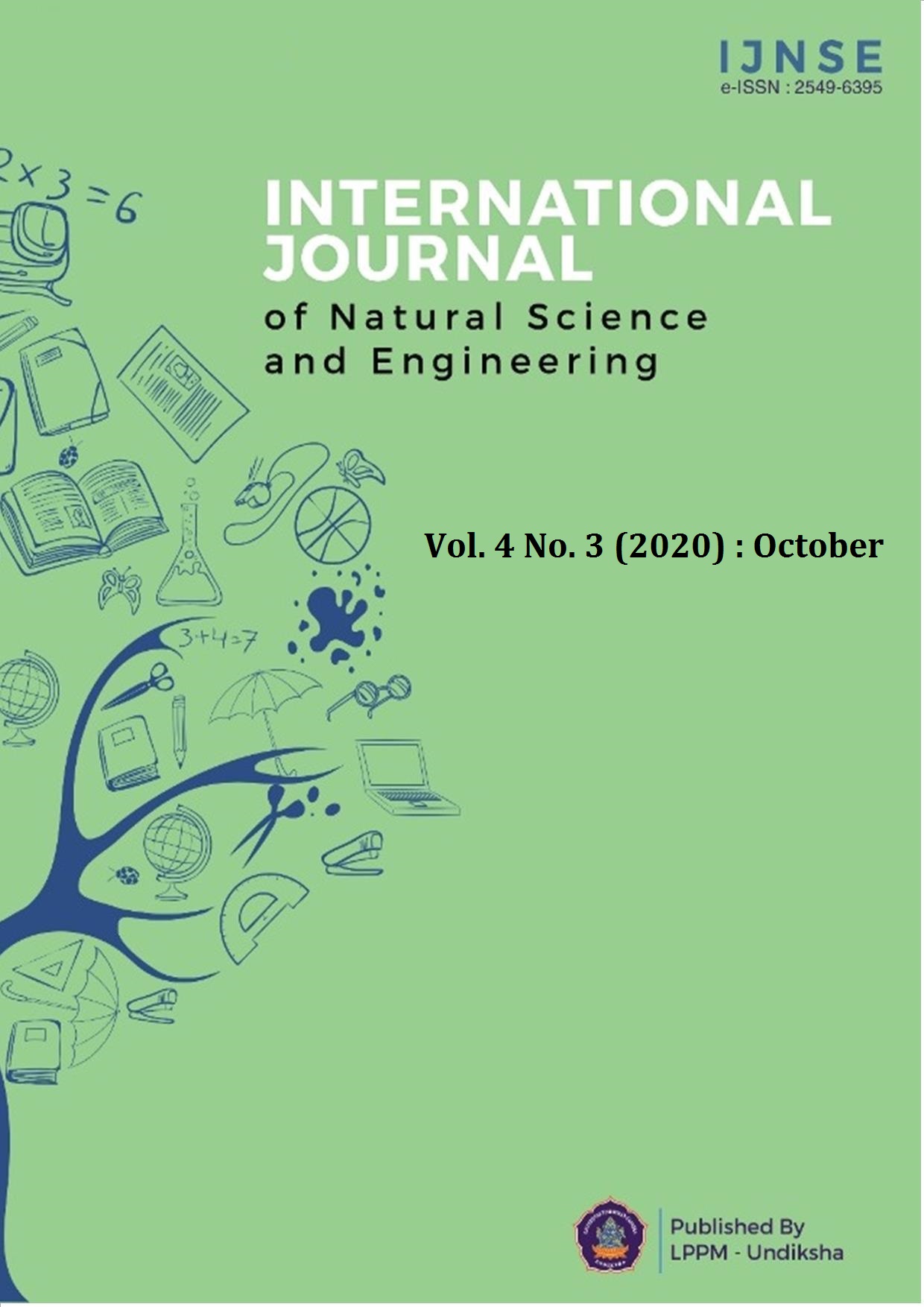Strength Analysis and Assessment of Ina-TEWS Wave Glider
DOI:
https://doi.org/10.23887/ijnse.v4i3.29873Keywords:
Indonesian Early Warning System, Wave Glider, Surface Floater, Maximum Principle Stress, Safety FactorAbstract
Indonesia as a country that often experiences tsunami disasters needs to have an early warning system against tsunami disasters. This system can use various existing technologies, one of which is the tsunami buoy system. The new tsunami buoy system does not use the natural mooring system but uses the wave glider system. This paper discusses the structural strength of the surface floater of wave glider using Eva Foam and Fiberglass material for skin and Alluminium material for frame and kell. The surface floater using 16 pieces for frame and 1 piece for keel. Enviromental loads is use in this paper like hydrodynamics load and weight load. The results from this paper is material from Eva Foam has a maximum principle stress is 12693 Pa and shear stress is 6114.6 Pa. For material from Fiberglass has maximum principle stress is 11.875 Pa and shear stress is 6076.3 Pa. Safety factor (SF) from maximum principle stress and shear stress for Eva Foams is up to 6x and SF for maximum principle and shear stress for Fiberglass is up to 26x. Conclusions for this paper is the desain for surface floater of wave glider it can be operated in the sea with draugh 0.18 m.References
Areias, P., Rodrigues, A., Rabczuk, T., Garção, J., Carvalho, A., 2017. Analysis of experimentally assessed EVA foams with mixed solid-shell elements capable of very large strains. Finite Elem. Anal. Des. 128, 19–31. https://doi.org/10.1016/j.finel.2017.01.003 DOI: https://doi.org/10.1016/j.finel.2017.01.003
Atika, R., Raditya, A.E., Marjianto, R.N., 2019. Automatic Tsunami Early Warning System Tersinkronisasi Bmkg Dan Pengeras Suara Tempat Ibadah. Autom. Tsunami Early Warn. Syst. Tersinkronisasi Bmkg Dan Pengeras Suara Tempat Ibadah 3, 30–35. https://doi.org/10.21831/jee.v3i1.26100 DOI: https://doi.org/10.21831/jee.v3i1.26100
Liu, B., Guedes Soares, C., 2020. Ultimate strength assessment of ship hull structures subjected to cyclic bending moments. Ocean Eng. 215, 107685. https://doi.org/10.1016/j.oceaneng.2020.107685 DOI: https://doi.org/10.1016/j.oceaneng.2020.107685
Mujahid, A.S., Priohutomo, K., 2018. Studi Kelayakan Desain Kapal Hisap Tambang. Wave J. Ilm. Teknol. Marit. 12, 81–88. https://doi.org/10.29122/jurnalwave.v12i2.3461 DOI: https://doi.org/10.29122/jurnalwave.v12i2.3461
Nugroho, W.H., Pitoyo, P., 2012. Study Numerik Distribusi Tegangan Badan Kapal Berbahan Aluminum. Wave J. Ilm. Teknol. Marit. 6, 1. https://doi.org/10.29122/jurnalwave.v6i1.3318 DOI: https://doi.org/10.29122/jurnalwave.v6i1.3318
Olson, R.A., 2012. Communications architecture of the liquid robotics Wave Glider, IFAC Proceedings Volumes (IFAC-PapersOnline). IFAC. https://doi.org/10.3182/20120410-3-pt-4028.00042 DOI: https://doi.org/10.3182/20120410-3-PT-4028.00042
Salekeen, S., Jones, D.L., 2007. Fatigue response of thick section fiberglass/epoxy composites. Compos. Struct. 79, 119–124. https://doi.org/10.1016/j.compstruct.2005.11.040 DOI: https://doi.org/10.1016/j.compstruct.2005.11.040
Sang, G., Zhu, Y., Yang, G., 2016. Mechanical properties of high porosity cement-based foam materials modified by EVA. Constr. Build. Mater. 112, 648–653. https://doi.org/10.1016/j.conbuildmat.2016.02.145 DOI: https://doi.org/10.1016/j.conbuildmat.2016.02.145
Shen, W., Yan, R., Luo, B., Zhu, Y., Zeng, H., 2017. Ultimate strength analysis of composite typical joints for ship structures. Compos. Struct. 171, 32–42. https://doi.org/10.1016/j.compstruct.2017.02.008 DOI: https://doi.org/10.1016/j.compstruct.2017.02.008
Suastika, K., Sahlan, Nugroho, W.H., Zubaydi, A., Misbah, M.N., Murdjito, 2019. Fatigue life assessment of waste steel reused as tsunami buoy keel structures: A case study. Int. J. Technol. 10, 700–709. https://doi.org/10.14716/ijtech.v10i4.501 DOI: https://doi.org/10.14716/ijtech.v10i4.501
Wang, P., Tian, X., Lu, W., Hu, Z., Luo, Y., 2019. Dynamic modeling and simulations of the wave glider. Appl. Math. Model. 66, 77–96. https://doi.org/10.1016/j.apm.2018.08.027 DOI: https://doi.org/10.1016/j.apm.2018.08.027
Xie, H., Liu, F., Tang, H., Liu, X., 2020. Numerical study on the dynamic response of a truncated ship-hull structure under asymmetrical slamming. Mar. Struct. 72, 102767. https://doi.org/10.1016/j.marstruc.2020.102767 DOI: https://doi.org/10.1016/j.marstruc.2020.102767
Yu, Z., Zheng, Z., Yang, X., Chang, Z., 2016. Dynamic analysis of propulsion mechanism directly drivenby wave energy for marine mobile buoy. Chinese J. Mech. Eng. (English Ed. 29, 710–716. https://doi.org/10.3901/CJME.2016.0317.032 DOI: https://doi.org/10.3901/CJME.2016.0317.032
Zhang, J., Chang, Z., Lu, G., Zheng, Z., Zhang, Z., 2020. Analysis of the Dynamic System of Wave Glider with a Towed Body. J. Ocean Univ. China 19, 519–524. https://doi.org/10.1007/s11802-020-4341-4. DOI: https://doi.org/10.1007/s11802-020-4341-4





